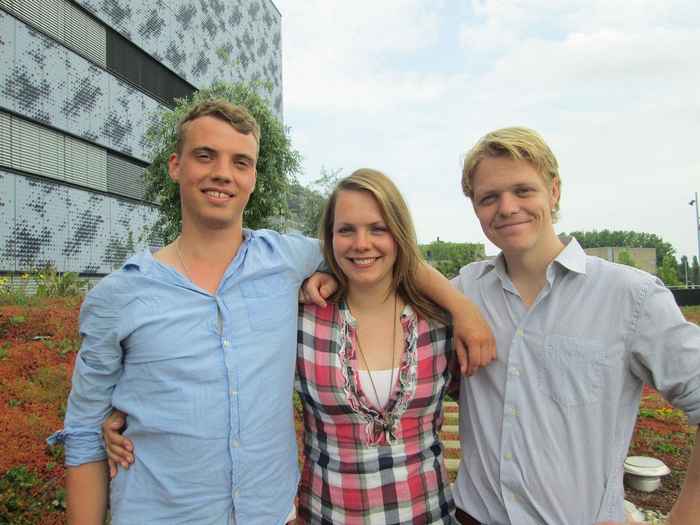A research project in Peru
three Master's students about their experiences

An extraordinary opportunity
'After studying for 8 months, following courses and writing literature reviews, an extraordinary opportunity opened for us to study that in which we are interested the most in a very special ecosystem. Via a former researcher at the University of Amsterdam (Raúl, to whom we are very grateful), we were given the change to study life in extreme conditions in the Cordillera Blanca, an Andean mountain range in Peru. Life in this area is challenged by a unique and extreme set of environmental factors. One of the factors that put life under pressure is related to the high altitude in this region. At high altitude, life is exposed to, among others, blistering levels of UV radiation and low temperatures. Moreover, due to natural processes metals leak out of metal rich rock into streams which results in high concentrations of metals. Thus, life dwelling in or around such streams are not only challenged by altitude related stress factors but also by toxic metals.'
The perfect research area
'The Cordillera Blanca, thus, provides an perfect research area to study those things that we like to study the most: extreme life, aquatic organisms in an unique habitat and local adaptation by plants to local environments! During our stay in Peru, the three of us will each study a different aspect of this unique ecosystem. One of the organisms that will be studied are chironomids (nonbiting midges). Detoxifying microbes that are found in these chironomids could provide protection for chironomids against extreme conditions like metal pollution and high UVB radiation. To gain more insight into the relation between mircobes and protection against harsh environment, Anouk will look into the endogenous microbial diversity of chironomids found in polluted and unpolluted streams at different altitudes. Moreover, insects like chironomids but also mayflies are protected by pigments against UV radiation. Guido will study the relation between altitude and these protective pigments that are etiher acquired via the diet of the insects or produced by the insects themselves. In addition to insects and bacteria, the effect of metals and altitude on plants will also be studied. Specifically, Elmer will study how the genetic structure of populations of a small Andean mountain plant (Werneria nubigena) is related to altitude and metal exposure.
The fact that we were given the opportunity to travel the world and study an unique and fascinating ecosystem makes us very happy and grateful and we would like to thank all who have helped us making this project possible.'